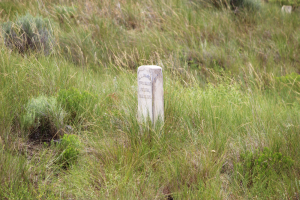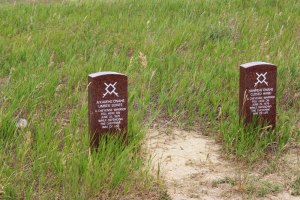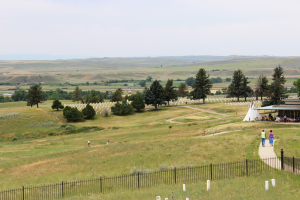
Sue, having a degree in history, loves to go to places where history was made. And she’s always wanted to visit Little Bighorn Battlefield. She likes to tromp around the battlefields because, she says, it’s all about the geography. And it’s’ true. There are things you can see and understand about what happened when you visit different parts of the battlefield that you can’t comprehend if you read from a book or even if you just drive by in a car.
So a hot day in July found us walking the trails in Little Bighorn Battlefield, located in south central Montana. It’s that place where Custer made his “last stand”.
We walked down a long trail toward a ravine where some of Custer’s men tried to take cover and escape, unnoticed. But to no avail, they were seen and killed by Native Americans shooting down into the ravine.
We looked at the white headstones and red headstones marking places where remains of those that had fallen had been found. These dot the hillsides around the park, sometimes just a lone solitary marker, far off.
We looked at the monument on “Last Stand Hill”, where there is a headstone for Colonel Custer, along with many other soldiers who perished there.
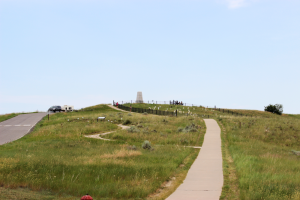
And we took some time to explore the Indian Memorial, where the Spirit Warriors stand high above us to the north, with a dramatic view of the Montana plains, representing the spirits of the warriors and the soldiers going to the afterlife and helping us to remember the blessing of having peace.
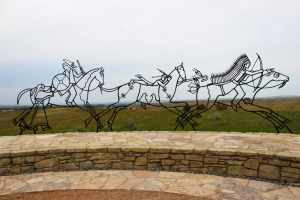
The road tour takes you to the far end of the park, where the events actually started at the area of what is now known as Reno Hill or the Reno/Benteen Battlefield. There is a walking trail at the end, with a guide, that you can use to see where the battle events started, including where the hospital area was, where soldiers volunteered to make a long, deep trek under fire to get water from the wounded, among other points of interest.
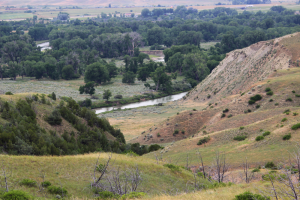
There is an audio tour that you can listen to on your cell phone, describing events and areas of interest at many points in the Battlefield.
Finally, there is the National Cemetery, where many veterans who have fought in other wars or served our country, along with members of their families have been laid to rest. It’s always an impressive sight, to see those white headstones all neatly aligned, as they are in the various National Cemeteries across the country.
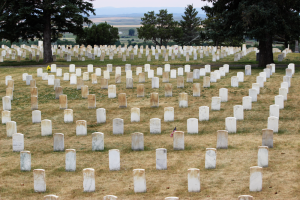
We hope that you’ll take some time, as we did, to visit this historic area, and learn a bit about our history.
Here is information about the hours, the fees, and things to do at the battlefield.
And here is some great information about the Reno/Benteen Battlefield from the application to be on the National Register of Historic Places and other information about the Little Bighorn Battlefield.
See our Flickr Slideshow of pictures we took at Little Bighorn Battlefield:
